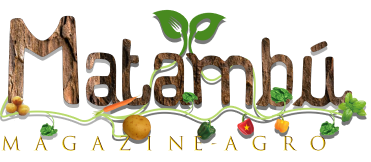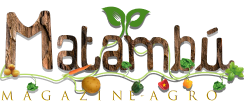[ad_1]
A brand new study revealed in the CABI Agriculture and Bioscience journal highlights that pests, ailments, and drought, are the principle challenges to pumpkin and watermelon production in Uganda.
A spread of suggestions are offered to assist the nation’s pumpkin and watermelon farmers enhance their yields to assist enhance their livelihoods and meals safety.
The study assessed the present production constraints for watermelons and pumpkins, management practices, sources of production inputs to information analysis and determination making in production of those crops.
The staff of researchers, that included these from the College of Natural Sciences of Makerere University, Uganda, Muni University, Uganda, the National Crops Resources Institute, Uganda, and the University of KwaZulu-Natal in South Africa, surveyed 105 watermelon and pumpkin fields in 28 districts from nine-sub-regions of Uganda.
Among the findings, excessive transport and labor prices have been additionally key elements affecting productiveness of pumpkin and watermelon—grown by 85.7% and 14.3% of farmers surveyed respectively.
The scientists reveal that bacterial wilt (33.3%), downy mildew (20%), anthracnose powdery mildews (7.8%) and virus ailments (5.6%) have been the most typical and essential illness constraints of each fruits.
With respect to pests, the whitefly (Bemisia tabaci, Gennadius) (29.5%), order hemiptera household aleyrodidae, aphids (Myzus Persicae, Sulzer) (20%), order hemiptera household aphidadae, melon fly (Bactrocera cucurbitae, Coquillett) (16.2%), order diptera household tephritidae and cutworm (Agrotis ipsilon, Hufnagel) (9.5%), order lepidoptera household noctuidae, have been reported as essentially the most limiting pests of each watermelon and pumpkin production.
Watermelons and pumpkins (collectively referred to as cucurbits) are cultivated in Uganda for his or her leaves, fruits, and seeds, thereby contributing to meals, diet and earnings safety.
In Uganda, pumpkins have been cultivated for hundreds of years. However, watermelon cultivation is a lower than three decades-old exercise and is more and more changing into essential due to its dietary and financial worth. Nonetheless, there’s restricted analysis and info on constraints affecting watermelons and pumpkin production.
Professor Arthur Tugume, a lead writer of the paper, stated, “This study highlights the significance of watermelon and pumpkin as sources of meals, earnings, and diet safety for native communities, even when these are usually not precedence crop commodities in Uganda.
“There was low production of pumpkin which can be partly due to poor high quality farm saved seed affecting profitability. The use of a hand hoe to take away weeds was the principle technique of weed management with a number of farmers utilizing herbicides whereas farmers primarily used ash as the principle technique of pest management.
“The farmers of watermelon practiced farmgate method of selling their produce while those of pumpkins sold to nearby markets, and local traders.”
The researchers additionally spotlight that many farmers have been unable to distinguish between ailments affecting watermelon, pumpkin and their related signs. A shock discovering was that farmers indiscriminately utilized varied sorts of agrochemicals—herbicides, fungicides, pesticides, acaricides, to management insect pests on these crops with none concerns on their meant use nor impression of the surroundings.
Fred Masika, a co-researcher on the paper from Makerere University and Muni University, stated, “There is a necessity to prepare farmers on built-in pest and illness administration, in addition to in the suitable strategies for making use of agrochemicals.
“Several interventions needs to be applied to enhance production of those crops in order that the values of the crops are realized much more.
“For example, establishing storage centers for watermelon in the newly established irrigation schemes (e.g., Ngenge, Tochi, Doho, Mubuku, and Wadelai irrigation) and in Central Uganda where high production is expected.”
Other measures instructed by the scientists embody establishing licensed seed methods which offer disease-free planting supplies, addressing the problems of transport, and worth addition.
They additionally name for the identification of the causal pathogens of ailments in order that administration methods may be developed. This could embody, the researchers argue, the event and/or promotion of a extra environmentally pleasant technique of breeding for resistance to pests and ailments.
[ad_2]
Source link










